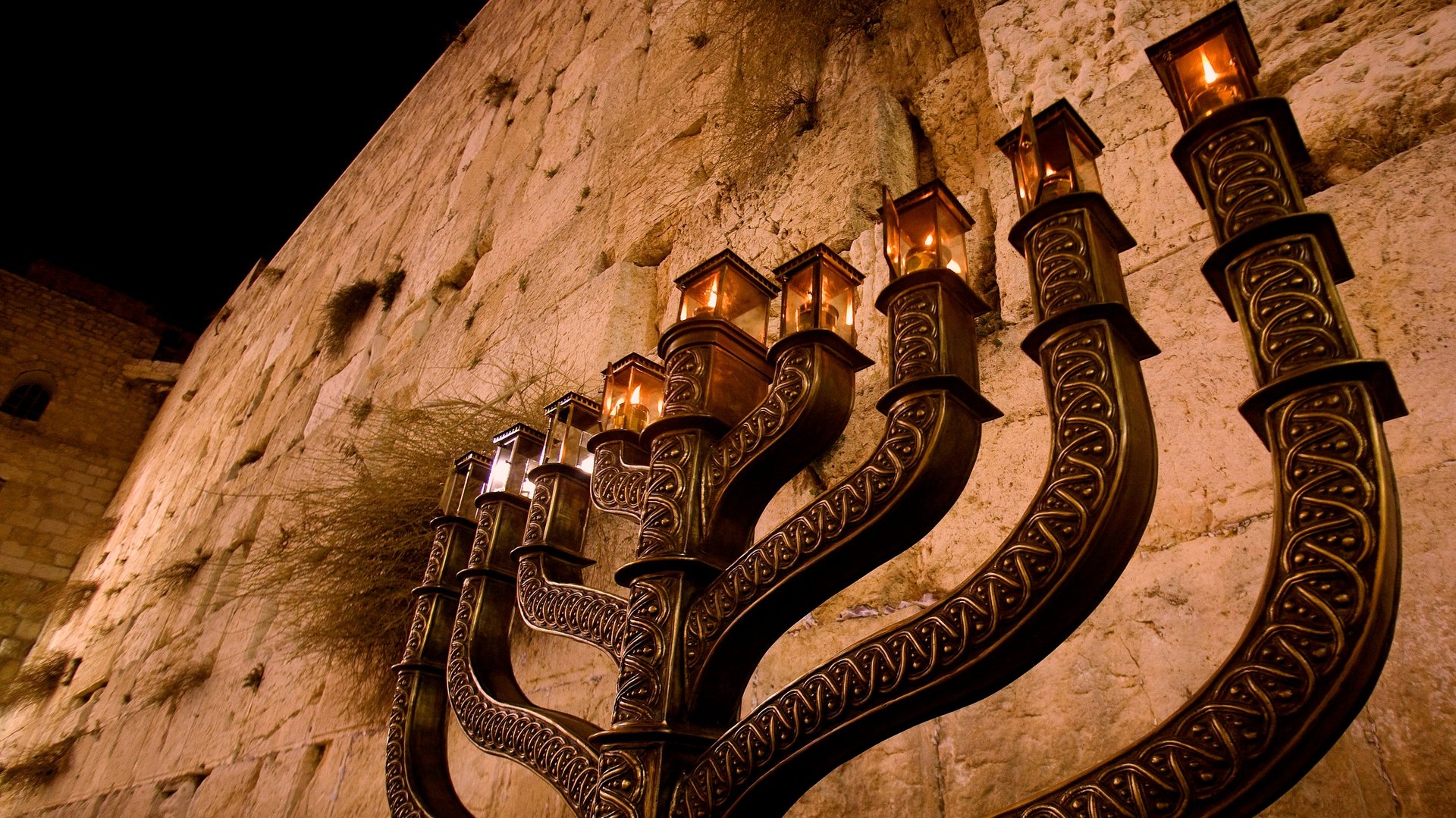The lesson of Hanukah is actually an empowering management principle
Hanukah, the Jewish festival of lights, is an annual reminder of abundance. For eight days in early winter, families and friends gather around a menorah each night to light candles and chant blessings to commemorate small miracles.


Hanukah, the Jewish festival of lights, is an annual reminder of abundance. For eight days in early winter, families and friends gather around a menorah each night to light candles and chant blessings to commemorate small miracles.

The holiday celebrates a miracle that occurred during the rededication of a Jewish temple in Jerusalem that was destroyed in a battle around 200 BC. The Maccabees, or Jews, were fighting against the Hellenist army, the ruling Greek-Syrian regime, which sought to institute a single religion in the empire. Against all odds, the Maccabees won, but the win isn’t what’s considered miraculous, it’s what happened after the battle. There was only enough olive oil to keep the temple lamps lit for a day, but they remained lit for eight nights.
“It’s a humble miracle, but what’s important is that the little bit of oil could not be exhausted and that reminds us anything can happen. God has no boundaries and isn’t limited by the physical,” explains Rabbi Jonathan Feldman, who ministers at the Manhattan Jewish Experience in New York. “We celebrate light, the nonmaterial, a spiritual symbol. But the Torah also reminds us: Abundance comes from above.”
The Hanukah miracle is but one example of “abundance mindset” in Judaism, says Feldman. It’s also a popular management principle, which states that living with a sense of plenty makes us more rich, materially and spiritually. Jews have always been taught to adopt this mentality, according to Feldman and other American rabbis.
Abundance mindset was made famous in secular circles by Stephen Covey in his 1989 book, The Seven Habits of Highly Effective People. Covey argues that a personal sense of general sufficiency—there’s enough in the universe for all of us—leads to happiness, satisfaction, success, and material well-being. Or, stinginess of spirit results in lack and failure, whereas operating from a mindset of ampleness creates real world benefits.
The principle is now being taught to elementary school students in Indiana, for example, to foster positive leadership skills. The US Chamber of Commerce encourages embracing Covey’s ideas, writing, “With an abundance mindset, people ask ‘what if’ and ‘why not?’… Once you start to look for more, you soon see more everywhere around you, and you begin to expect more too.” Jim Collins, author of six books about business greatness and failure. refers to the abundance mindset as a shift in attitude to the genius of ‘and’ versus the tyranny of ‘or’.
Feldman said that the similarities between Covey’s lessons and Jewish teachings are striking. “For example, the Talmud tells us that when we give charity, we get rich, and it promises that the more we give, the more we get.”
But he warns against attempting to manipulate the universe for reward, and says that symbolic acts, like lighting the Hanukah candles, keep Jews in touch with God’s role in miracles. Feldman explains,“The person who only ever reaps, never stopping and taking satisfaction, or celebrating being created as well as creating, isn’t experiencing abundance because material abundance doesn’t really make us rich. Who is rich? According to the Talmud, the one who is happy with what they have.”
Judaism generally emphasizes gratitude, explains Reb Moshe Waldoks, senior rabbi at Temple Beth Zion in Brookline, Massachusetts: “Life is a blessing. Every breath is a miracle but we forget.”
Hanukah is one way that Jews celebrate this principle, he explains, but the holiday wasn’t always major. It wasn’t celebrated at all until about 150 years after the Maccabees rededicated the temple that a rabbinical tradition began in Judaism and the first rabbis instituted Hanukah to make a spiritual affair of a political victory.
There were also practical considerations. “The pagan holiday Saturnalia emphasized the lighting of torches and was celebrated about the same time of year, which probably also influenced its development,” Waldoks explains. He notes that Hanukah isn’t religiously significant and only really grew into a popular holiday in 1950s America when Jews began moving out of cities and into the suburbs. ”They were trying to identify as white for the first time and it conveniently coincided with Christmas, so they created new traditions, like giving gifts. Bottom line is, Hanukah gets much more attention than it should.”
In his view, Jewish abundance mindset is better evidenced in the commandment to love thy neighbor as thyself and the Torah’s general emphasis on offering kindness to strangers. “These [teachings] remind us to give freely and want the best for others,” says Waldoks. “Don’t give crumbs to your guests. Give the main course. Give your bed. The Torah tells us to love the stranger 33 times. Why? Because each Jew experienced suffering and slavery, at least ancestrally.”
Without generosity from neighbors, strangers, and God, none would have survived, hence the Torah’s repeated emphasis on giving to those close and unknown, the rabbi explains.
The Hebrew word for charity, tzedakah, illuminates this perspective on giving. It means righteousness, fairness or justice. Giving is simply the right thing to do, and the recipient of a charitable gift does a favor to the giver by providing the opportunity to fulfill the duty to tithe. In the words of the famous ancient Rabbi Maimonides, “Nobody is ever impoverished through the giving of charity.”
This obligation to be generous is itself a recognition of abundance. Waldoks, Feldman, and the rabbis who came before them, teach that everyone has something to give, and that material and spiritual generosity yield immeasurable return on investment.